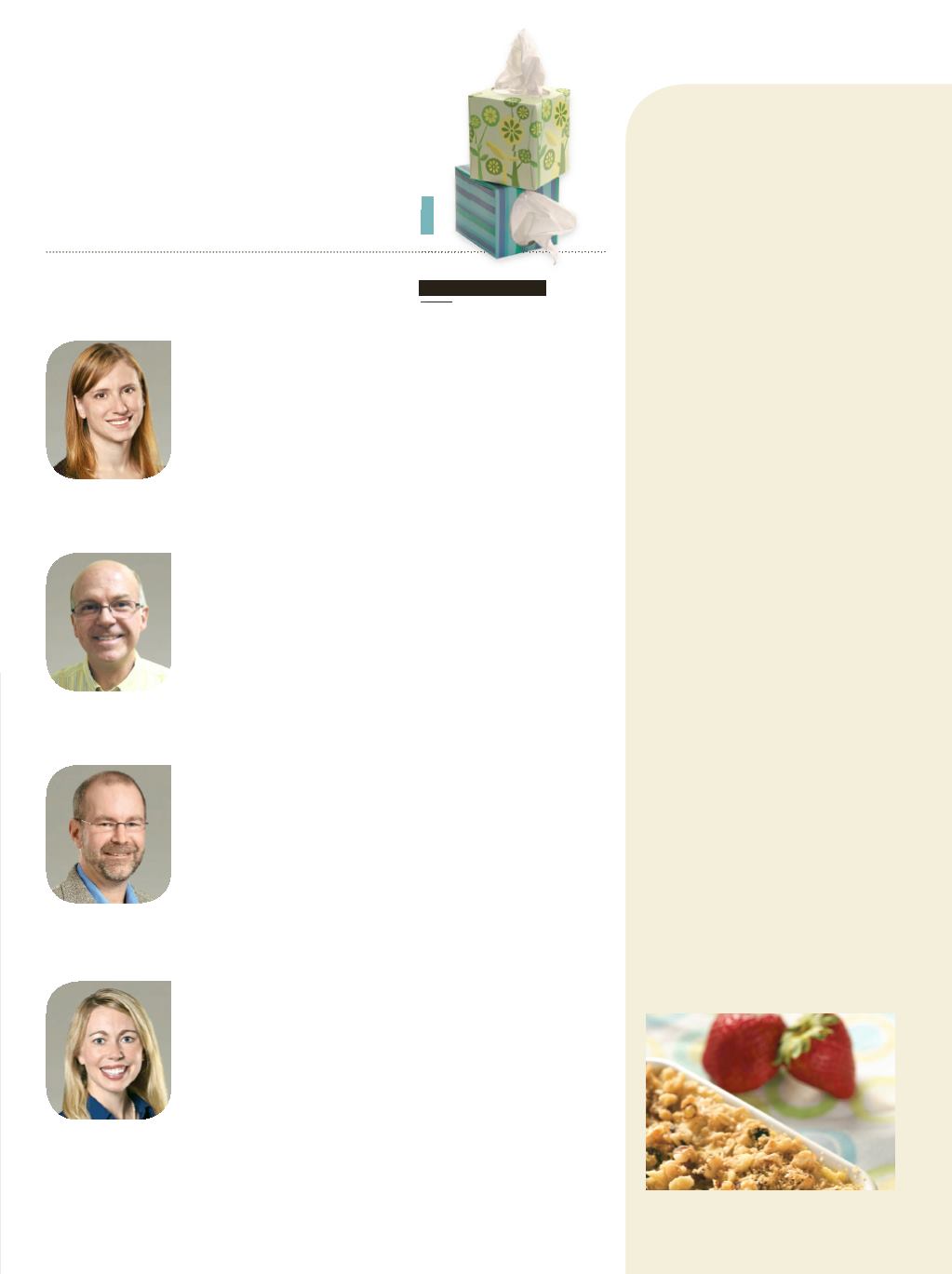
True or False:
Colds are caused by bacteria.
Answer: False.
“Colds are actually caused by viruses—in
fact, there are more than 200 types of viruses that can cause
sniffling, sneezing, coughing symptoms,” said Heather Wood,
MD, family medicine physician at Aspirus Rhinelander and
Woodruff Clinics. “Since colds are not caused by bacteria,
taking antibiotics won’t help. The only time you might need an
antibiotic is when a cold leads to further complications, like an
ear or sinus infection.”
True or False:
Taking decongestants or antihistamines will help
you get over a cold more quickly.
Answer: False.
“Over-the-counter medication can help you
manage symptoms for the duration of your illness, but your
cold has to run its course and will last about one to two weeks
no matter what you take,” said Dan Bjork, Aspirus Clinics
pharmacist. “The best ways to combat colds are to get plenty of
rest; drink lots of fluids; gargle with warm salt water to soothe a
sore throat; and use petroleum jelly to relieve a sore, raw nose.”
True or False:
Most colds occur in the fall and winter months.
Answer: True.
“We definitely see the majority of our cold
and flu patients in late fall and throughout the winter,” said
Al Neuhoff, MD, family medicine and walk-in physician at
Aspirus Stevens Point Clinic. “People tend to spend more time
indoors in the winter, which increases the chances of coming
into contact with someone who has the virus and can spread it
to you. The cold air this time of year also dries out the inside of
your nose, making you more susceptible to infection.”
True or False:
Washing your hands is one of the most effective
ways to keep colds from spreading.
Answer: True.
“Some cold-causing viruses can live on the
skin and on surfaces such as doorknobs and stair rails for a few
hours,” said Krista Scharer, MD, family medicine physician with
Aspirus Family Health Specialists in Wausau. “The virus can
enter your body if you touch your nose or eyes after touching
an infected surface. Frequently washing your hands with soap
and water helps stop the spread of viruses.”
4 truths to know
Baked oatmeal
Ingredients
1¾ cups low-fat (1%) milk
2 teaspoons unsalted butter
/
8
teaspoon salt
1 cup old-fashioned rolled oats
¼ cup dried apricots
¼ cup raisins
3 tablespoons lightly packed
brown sugar, divided
½ Golden Delicious apple, peeled
and cored
3 tablespoons chopped walnuts
Directions
w
Preheat the oven to 350 degrees.
w
In 2-quart microwaveable, oven
proof casserole, heat milk and
butter until milk steams, about 1
to 2 minutes. Mix in salt and oats
and set aside.
w
Chop apricots. Mix apricots, raisins
and 1 tablespoon of the sugar into
oats. Shred apple into oats and
mix to combine.
w
Bake oats, uncovered, for
15 minutes. Stir, then top with
remaining sugar and the nuts.
Bake 15 minutes longer, or until
the oats are chewy. Divide the
oatmeal among four bowls. Serve
immediately.
Nutrition information
Makes 4 servings. Amount
per serving: 280 calories,
8g total fat (2g saturated fat),
45g carbohydrates, 9g protein,
4g dietary fiber, 280mg sodium.
Source:American Institute for Cancer Research
Heather Wood, MD
Family Medicine
Physician
Dan Bjork
Pharmacist
Al Neuhoff, MD
Family Medicine and
Walk-In Physician
Krista Scharer, MD
Family Medicine
Physician
Colds
HOW
much do you know about one of the most common illnesses around?
Take this true-or-false quiz to test your know-how about colds.
aspirus.org
15


